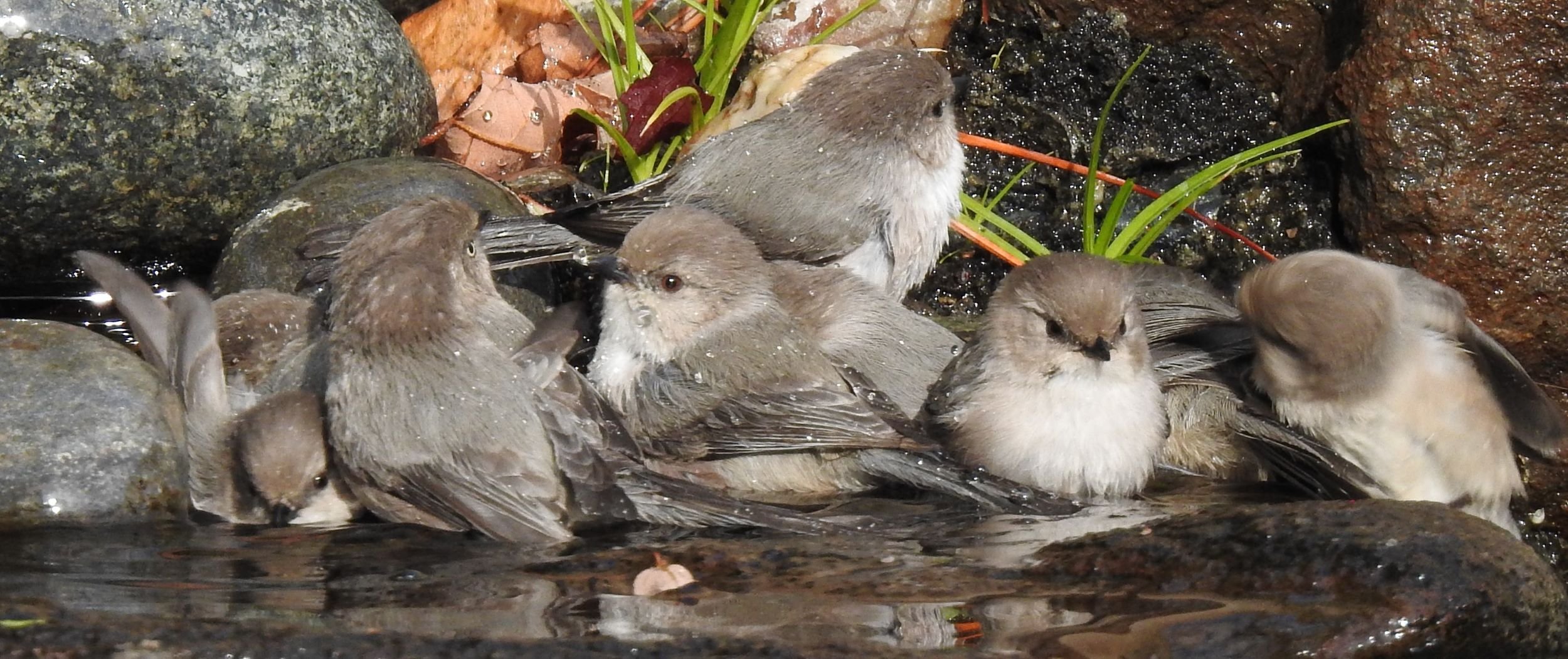When a wild bird visits your yard, clean water to drink and to bathe in is a welcome sight. Even though some birds obtain a small amount of water from the insects or fruits they eat, most wild birds search for fresh water on a daily basis. You can help wild birds find water by setting up a birdbath in your yard! Experts say that supplying fresh water for wild birds is a lot more important than supplying them with seed or other foods. Wild birds use birdbaths to drink water, cool themselves, bathe, and to remove parasites. Climate change may make summers hotter and longer in the future; so wild birds and other wildlife will benefit when there is clean water available in our yards!
Hummingbird at Fountain, Image by Gesna Clarke
Setting Up a Birdbath
Many birdbaths used today are often made out of cement. However, cement is a very difficult surface to clean due to all the nooks and crannies present. In addition, cement birdbaths are frequently made too deep and will often crack in freezing temperatures. Basins made of hard plastic are a better choice. They are easier to clean, don't break if they fall, and don't usually crack in cold weather. You can either purchase a birdbath or make your own.
You can make a birdbath at home by using a 2 inch deep, shallow basin (or round container), such as a garbage can lid, old frying pan, cake pan, or a flower-pot saucer that’s used to collect draining water. Avoid flimsy or lightweight basins that will blow over in the wind. A heavy rock can be used to anchor down a basin. Here are some additional tips on having a birdbath in your yard:
Choose a shady or partially shady site so that the water stays cool and birds can cool off. Water that’s in a shady location will evaporate slower and will stay fresher longer. Bushes or trees should be close by so that birds using the birdbath can find shelter quickly when necessary.
The water in the basin should only be 1-2 inches deep. Shallow water will give young birds more confidence to drink from your birdbath when venturing out their own.
Empty and replace the water every 1-2 days.
Large pebbles or flat rocks positioned slightly higher than the water’s surface should be placed inside the basin. This will offer perching surfaces and will help wild birds feel more secure. Gravel or sand can be added to the bottom of the birdbath so that the surface isn’t slippery.
Your birdbath should be positioned as close to the ground as possible. Birds naturally drink water from puddles on the ground. It‘s also nice to position the birdbath where you can see the birds.
You may want to purchase a device for your birdbath to keep the water moving or agitated (like a bubbling fountain). The sight and sound of moving water will attract more birds to your birdbath. Mosquitoes lay their eggs in still or stagnant water. So a birdbath with moving water is less likely to be used by mosquitoes for egg laying.
There are also birdbath heaters that prevent the water from freezing in the winter.
Bushtit, Image by Mary Forrestal
Keeping your Birdbath Clean
Neglecting your birdbath may cause more harm than good. Birds need both fresh water and a clean birdbath. Dirty birdbaths can harbor harmful bacteria and spread viruses. Birds are more attracted to birdbaths with clean surfaces too. Here’s how to go about cleaning your birdbath:
Pour out the old water from the basin.
Rinse the basin off with a hose.
Scrub the basin with a wire brush using a solution of one part vinegar and nine parts water. Let the solution soak inside the basin for several minutes. Avoid using household cleansers because they may adversely affect the essential oils that are naturally on birds’ feathers.
Empty out the solution inside the basin and thoroughly rinse the basin with a hose.
Allow the basin to dry. Then return it to its location in your yard and fill it with water.
-Jane Van Kessel


